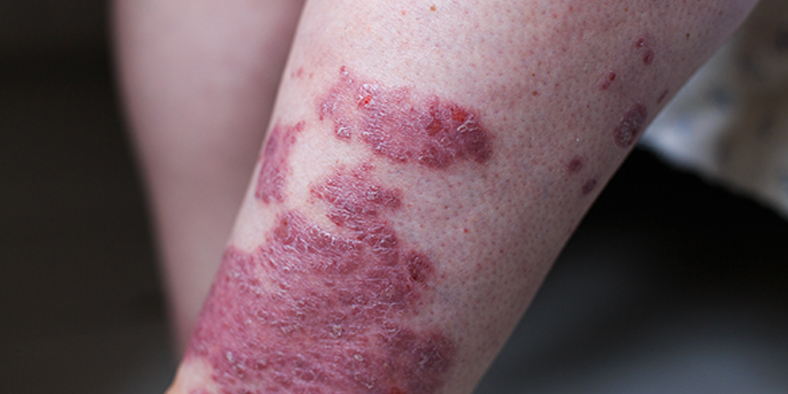The Silent Stalker: What Is Erythrodermic Psoriasis?
Imagine waking up one day, and your skin is on fire. It’s red, peeling off, and severely itchy. Worse still, it covers your entire body, making everyday tasks a living nightmare. Welcome to the world of Erythrodermic Psoriasis, a rare but serious skin condition that affects approximately 3% of people who have psoriasis.
Psoriasis, in its simplest definition, is an autoimmune condition causing a rapid buildup of skin cells. This buildup of cells causes scaling on the skin’s surface. Usually, psoriasis appears as patches that might be itchy and sore. But in the case of Erythrodermic Psoriasis (EP), it’s a whole different ballgame.
Unlike its cousins, plaque psoriasis, guttate psoriasis, inverse psoriasis, and pustular psoriasis, Erythrodermic Psoriasis is the rarest, most volatile, and severe type. This type of psoriasis leads to widespread, fiery redness over a significant part of your body. It causes your skin to shed rapidly in sheets instead of small scales, causing severe pain and discomfort.
The Unseen Enemy: Who is at Risk?
If you’re thinking, “Phew, I don’t have psoriasis, so I’m safe,” I’ve got some bad news. While it’s true that EP most commonly occurs in people with a history of psoriasis, even individuals without such history aren’t entirely out of the woods.
EP can be triggered by severe sunburn, infection, alcoholism, and even abrupt discontinuation of systemic treatment or potent topical steroids. It’s also been linked to other medications such as lithium, antimalarial drugs, and even simple over-the-counter medications like ibuprofen. The harsh truth is, no one is truly safe.
People of all ages and both sexes are susceptible, though men slightly more than women. Even children aren’t spared, though EP is much less common in this demographic.
The Silent Scream: Living with Erythrodermic Psoriasis
The effects of EP extend far beyond the skin. This condition brings with it a host of complications and impacts various facets of the patient’s life.
The skin is the body’s first line of defense against the environment, and when it’s compromised, it leaves the body exposed to infection. People with EP are more susceptible to pneumonia, staphylococcal septicemia, and other potentially life-threatening infections.
This skin disorder also affects the body’s ability to regulate temperature. The excessive shedding of skin impairs the body’s insulation and temperature regulation, leading to episodes of hypothermia, especially in colder climates.
The relentless itching and burning sensation disrupts sleep, impairs concentration, and significantly affects a person’s quality of life. It also has a psychological toll, leading to feelings of embarrassment, social withdrawal, depression, and anxiety.
It’s not just the physical and emotional toll, either. Treatment for EP can be expensive, creating a financial burden. Hospitalization is often required during severe flare-ups, leading to missed work days and potential job loss.
The Road Ahead: Dealing with Erythrodermic Psoriasis
As of now, there is no definitive cure for psoriasis. The aim of treatment is to control the symptoms and prevent secondary infections. Therapies may include topical treatments, phototherapy, systemic medications, or a combination of these.
Life with EP can be challenging, but it’s not a life sentence. Patients need a good support system and the ability to advocate for their health. It’s essential for anyone suffering from EP to work closely with their healthcare provider to develop a treatment plan that suits their individual needs.
Living with EP means adjusting to a new normal. It involves taking extra care to avoid triggers, being vigilant about signs of infection, and taking steps to cope with the emotional impact of the disease. It’s also about recognizing that life with EP might be different, but it’s still worth living.
Are You Ready to Turn the Tables on Erythrodermic Psoriasis?
The tides may be about to turn in the world of psoriasis treatment! Medical research is a dynamic field, with new breakthroughs happening all the time.
Today, there’s a glimmer of hope on the horizon. Emerging therapies and novel treatment options may offer a ray of hope for those living with Erythrodermic Psoriasis.
So, are you ready to be part of the revolution? Dive into our comprehensive guide on these groundbreaking advancements, and let’s journey together towards a future free of the red, scaly nightmare! Let’s reclaim your life from Erythrodermic Psoriasis – your new dawn awaits!

